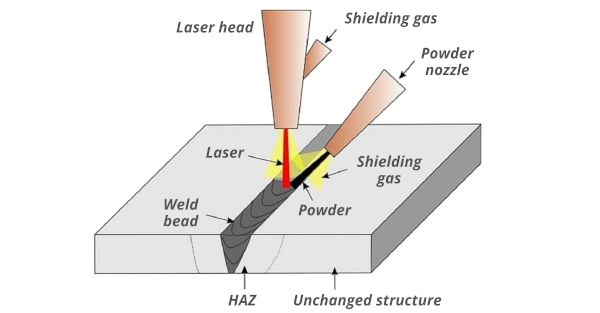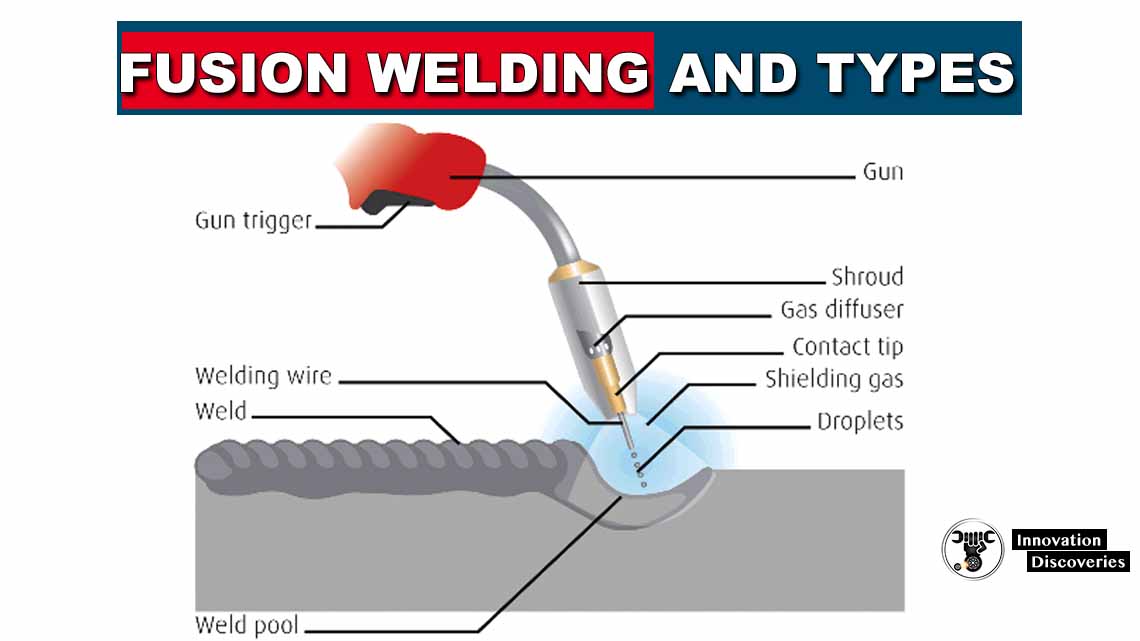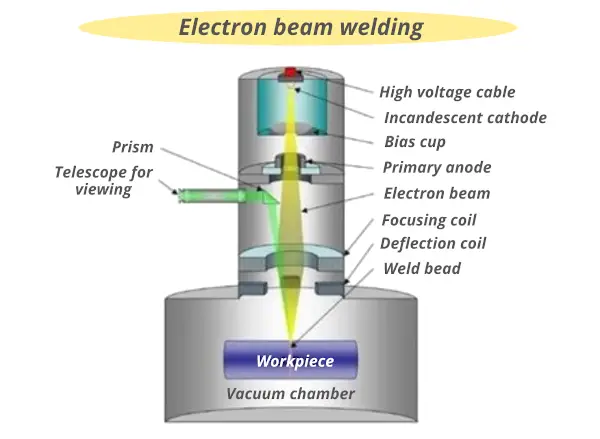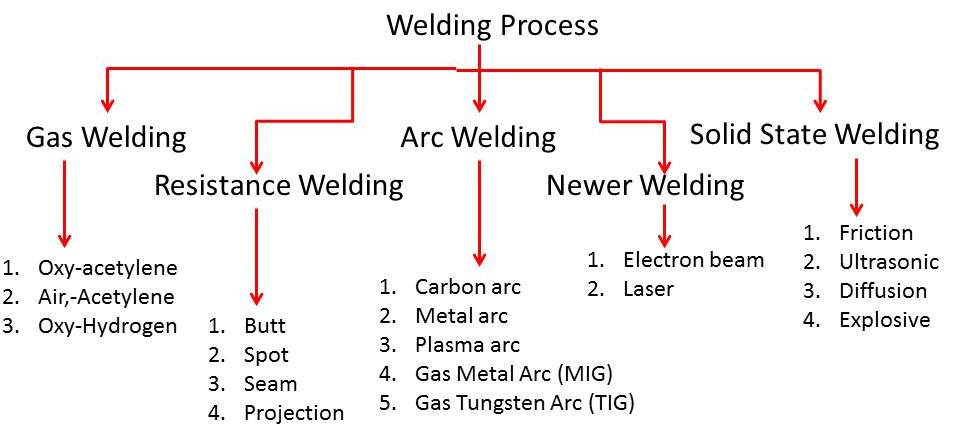fusion welding definition
A definition for fusion welding is as a generic term for welding processes that rely on melting as part of joining materials of similar melting points and composition. So heat is always associated with these processes.

Manufacturing Processes Different Fusion Welding Processes Welding Tips Gtaw Tig Welding
Fusion welding is a method of welding that involves the melting of the base metal at the joint and the joining together of the molten metals to form a weld.

. To join metals by applying heat sometimes with pressure and sometimes with an intermediate or filler metal having a high melting point. When the metals cool down a strong joint is created between the two. External application of pressure is not required for fusion welding processes except for resistance welding where substantial contact pressure is required during welding for sound joining.
To bring into close association or union. Some materials require the use of specific processes. What is fusion welding.
The completed welded joint may be referred to as a weldment. The main difference between these welding processes concerns the distribution of heat and filler. To be capable of being welded.
Fusion welding is used in the manufacture of many everyday items including airplanes cars and structures. Fusion welding can be used for many purposes. From the definition fusion welding joins edges of different materials by heating them to a melting point.
2012 Farlex Inc. Like other welding processes its used to join two or more objects using heat. The fusion welding process may or may not require the use of filler material for welding.
Arc welding electron beam welding and laser welding belong to this category of welding processes see also Section 30521. Examples of the fusion welding are arc welding gas welding resistance welding etc. The welding of metals in a molten state without mechanical pressure or pounding.
Sometimes a filler material is necessary if there are gaps in the joint you are making. Electric fusion welding is the combination of metal and metal by heating one or several consumable electrodes and the workpiece. Fusion welding in which the metal parts are heated until they melt together can be performed with or without the addition of filler material.
The process may or may not require the use a filler material. By melting of parent material if the joint is produced called as Fusion Welding Process. Fusion welding is unique however because of its ability to fuse the respective objects.
The welding process that uses heat to join or fuse two or more materials by heating them to their melting point is known as fusion welding. Similarly heat fusion joining for pipes and pipe fittings is a large umbrella term that contains specific procedures and methods such as electrofusion butt fusion socket fusion saddle fusion and so forth. Fusion welding is a fascinating process that is picking up attention as a hobby for people all around the world.
Due to the high-temperature phase transitions inherent to these processes a heat-affected zone is created in the material755 although some techniques like beam welding often minimize this effect by introducing comparatively little. By using a heat source with sufficient power it is possible to fuse through a complete section of very thick plate. Assuming the objects are made of the same or similar materials the heat produced by a welding rig will melt their surfaces thereby allowing the objects to fuse together.
Welding exposes welders to gases metal fumes and toxins and increases risk of lung cancer and mesothelioma. Electric resistance welding is a welding process that uses a strong current to pass through the contact point between the electrode and the workpiece to generate heat from the contact resistance. Outside pressure application is not needed for fusion welding processes with the exception of resistance welding where significant contact pressure is necessary for the sound.
The method may involve the use of filler material or it may not. The process of fusing one metal to another using combustible gas covered electrode arcs and gas-shielded arcs. Fusion welding is a method that makes use of heat to combine or fuse two or more materials into a melting point by heating them.
The process requires a certain amount of heat and pressure but not necessarily an external filler material. Fusion welding is a process that uses heat to join or fuse two or more materials by heating them to melting point. Fusion welding is a generic term for welding processes that rely on melting to join materials of similar compositions and melting points.
Fusion welding means a process of welding metals in a molten and vaporous state without the application of mechanical pressure or blows. Fusion welding is a process where two pieces of metal are heated to their melting points to be joined or fused together. Definition of fusion welding.
Welding is usually used on metals and thermoplastics but can also be used on wood. The American Welding Society AWS defines fusion as The melting together of filler metal and base metal substrate or of base metal only which results in coalescence ANSI AWS A30 Standard Welding Terms and Definitions. The weld pool produced is difficult to control and the heat affected zone HAZ of such welds has a relatively coarse grain adversely affecting the mechanical.
Welding is a fabrication process whereby two or more parts are fused together by means of heat pressure or both forming a join as the parts cool. The union of two metal parts by welding. It is derived from the gas tungsten arc welding process and hence closely related to the same as both processes use a non-consumable tungsten electrode for the arc generation.
Fusion welding processes are all those welding processes where faying surfaces of parent part as well as filler material melt down during welding for weld bead formation. Plasma arc welding PAW is a fusion welding process which is used to join different type of metals in broad variety of sheet thicknesses. The arc of electric fusion welding.
The materials will undergo many phase transitions because the heating process creates a heat-affected zone HAZ on the materials.

Types Of Welding Prodess Types Of Welding Welding Welding Flux

What Is Radiant Energy Welding 2 Types You Should Know

Gas Metal Arc Welding Gmaw Welding Technology Gas Metal Arc Welding Welding Welding Technology

Welding Process Online Presentation

Universal Weld Stud Hz 1 Welding Process Weld Technology

Difference Between Fusion Welding And Non Fusion Welding

Welding Processes Classification Extrudesign Welding Process Electric Arc Welding Welding

What Is Fusion Welding And Types Of Fusion Welding
What Is The Difference Between Fission Welding And Fusion Welding Quora

What Is Radiant Energy Welding 2 Types You Should Know

Fusionwelding And Solid State Welding Processes Team 6

Welding Processes A Brief History Of Welding Late

Types Of Welding Tri State Fabricators

Welding Process In Shielded Metal Arc Welding Stick Welding Details Shielded Metal Arc Welding Arc Welding Gas Metal Arc Welding

Woodhead Publishing Welding And Other Joining Technologies Weldability Of Ferritic Steels Hardcover Walmart Com In 2022 Welding Hardcover Publishing

Thermal Conductivity Thermal Resistance Mechanical Engineering Thermal

Components Of Tig Welding Tig Welding Gas Supply Tig Welder

Welding Processes Classification Extrudesign Welding Process Electric Arc Welding Plasma Welding

Comments
Post a Comment